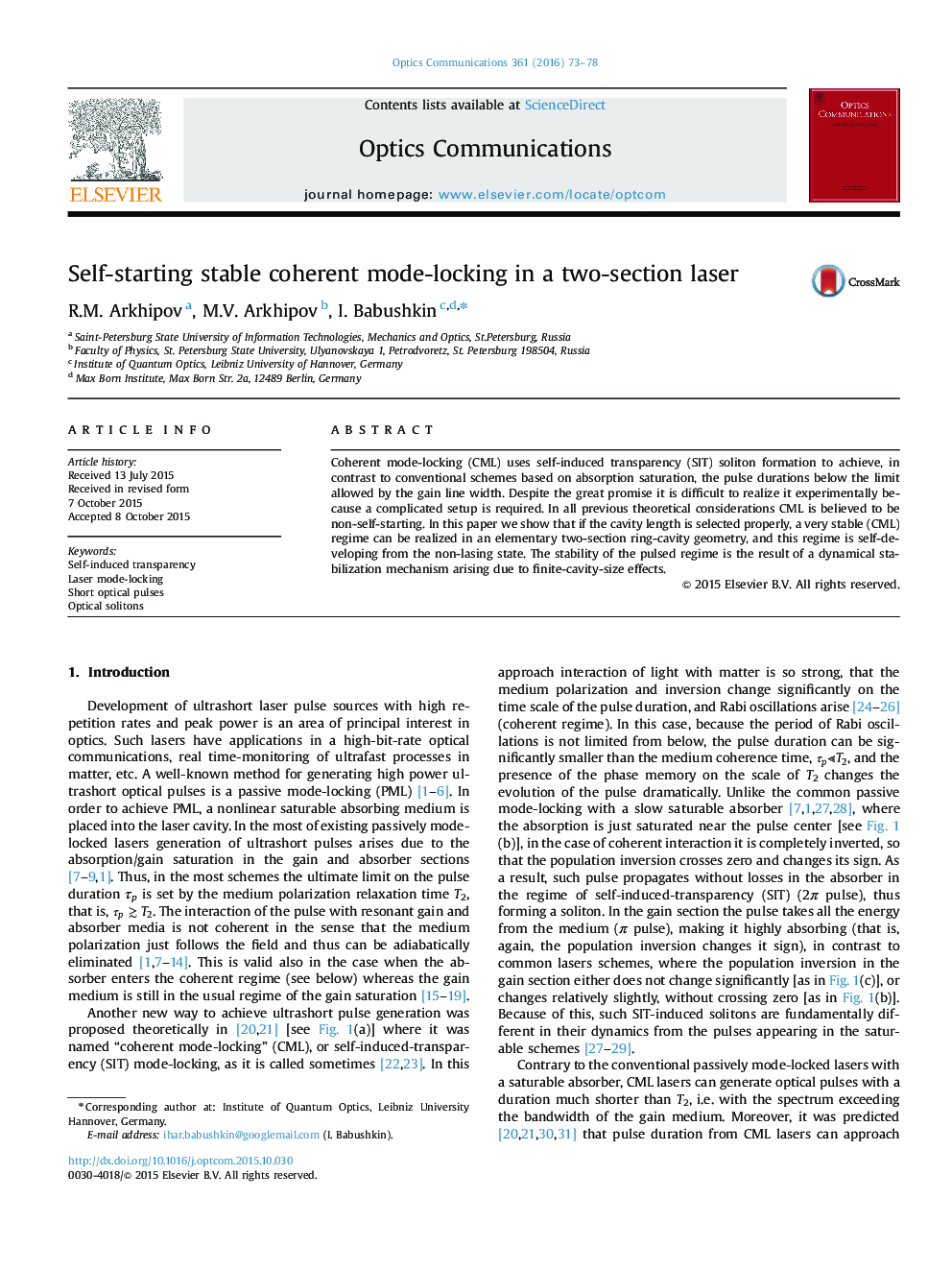| Article ID | Journal | Published Year | Pages | File Type |
|---|---|---|---|---|
| 1533822 | Optics Communications | 2016 | 6 Pages |
Abstract
Coherent mode-locking (CML) uses self-induced transparency (SIT) soliton formation to achieve, in contrast to conventional schemes based on absorption saturation, the pulse durations below the limit allowed by the gain line width. Despite the great promise it is difficult to realize it experimentally because a complicated setup is required. In all previous theoretical considerations CML is believed to be non-self-starting. In this paper we show that if the cavity length is selected properly, a very stable (CML) regime can be realized in an elementary two-section ring-cavity geometry, and this regime is self-developing from the non-lasing state. The stability of the pulsed regime is the result of a dynamical stabilization mechanism arising due to finite-cavity-size effects.
Related Topics
Physical Sciences and Engineering
Materials Science
Electronic, Optical and Magnetic Materials
Authors
R.M. Arkhipov, M.V. Arkhipov, I. Babushkin,
